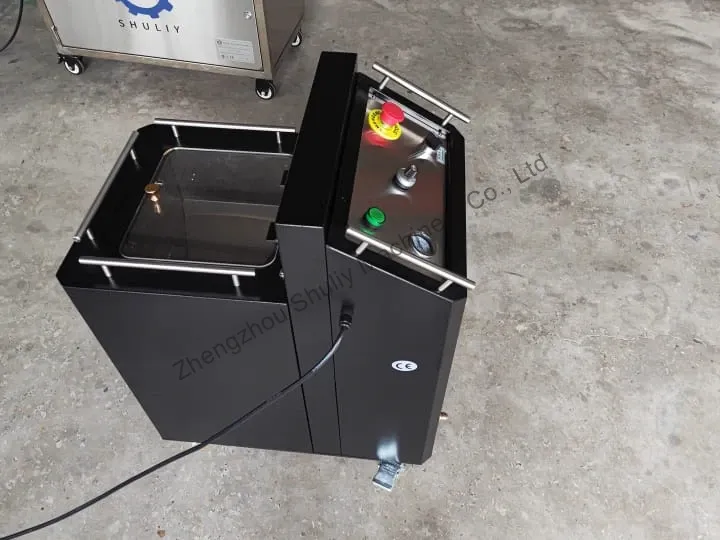Mashine yetu ya kulipua barafu kavu ina matumizi mengi, hapa kuna maswali machache kwa ajili ya kisafishaji barafu kavu kama marejeleo yako:
1. Je, barafu kavu inaweza kutumika kwa kuondolewa kwa rangi?
Ndiyo, lakini kiwango cha kuondolewa kinategemea mambo mengi ikiwa ni pamoja na: wasifu wa uso chini ya substrate, unene wa mipako, nguvu ya wambiso ya mipako, na nguvu ya kushikamana ya mipako. Viwango vya uondoaji wa rangi vinaweza kutofautiana sana, kutoka 300 sq. ft kwa saa hadi 1 sq.
Ikiwa una wasiwasi kuhusu uchafuzi, sumu, utupaji wa taka, au uharibifu wa substrate, mashine ya kukausha barafu inapaswa kuchukuliwa kuwa chaguo la kusafisha. Vinginevyo, sandblasting inaweza kuwa njia bora zaidi ya kuondoa rangi.
2. Je, mashine ya kukausha barafu inaweza kutumika kuondoa kutu?
Inaelekea kuondoa oksidi na chumvi zilizoshikiliwa kwa urahisi, lakini haitaondoa oksidi zinazozingatiwa sana. Baada ya kusafisha una alama ya SP ya 3 bila mabaki iliyobaki. Ili kupata chuma nyeupe lazima uondoe chuma cha uso, kitu ambacho mchakato wa ulipuaji wa barafu hauwezi kufanya.
3. Je, mchakato wa kusafisha barafu kavu kuzalisha umeme tuli?
Ndiyo, mchakato wowote wa hewa kavu huzalisha umeme tuli na ulipuaji kavu wa barafu sio ubaguzi. Maadamu kifaa cha ulipuaji na vijenzi vinavyolipuliwa vimewekewa msingi ipasavyo, kuna uwezekano kwamba utokaji tuli utakuwa tatizo.
4. Jinsi ya kupata malighafi kwa kusafisha barafu kavu?
Kwa kuwa malighafi kwa ajili ya kisafishaji barafu kavu ni vidonge vya barafu kavu vya mm 3, unahitaji kuvinunua katika ofisi ya malighafi au kununua moja kwa moja mashine ya kutengeneza vidonge vya barafu kavu ili kuzizalisha mwenyewe.

